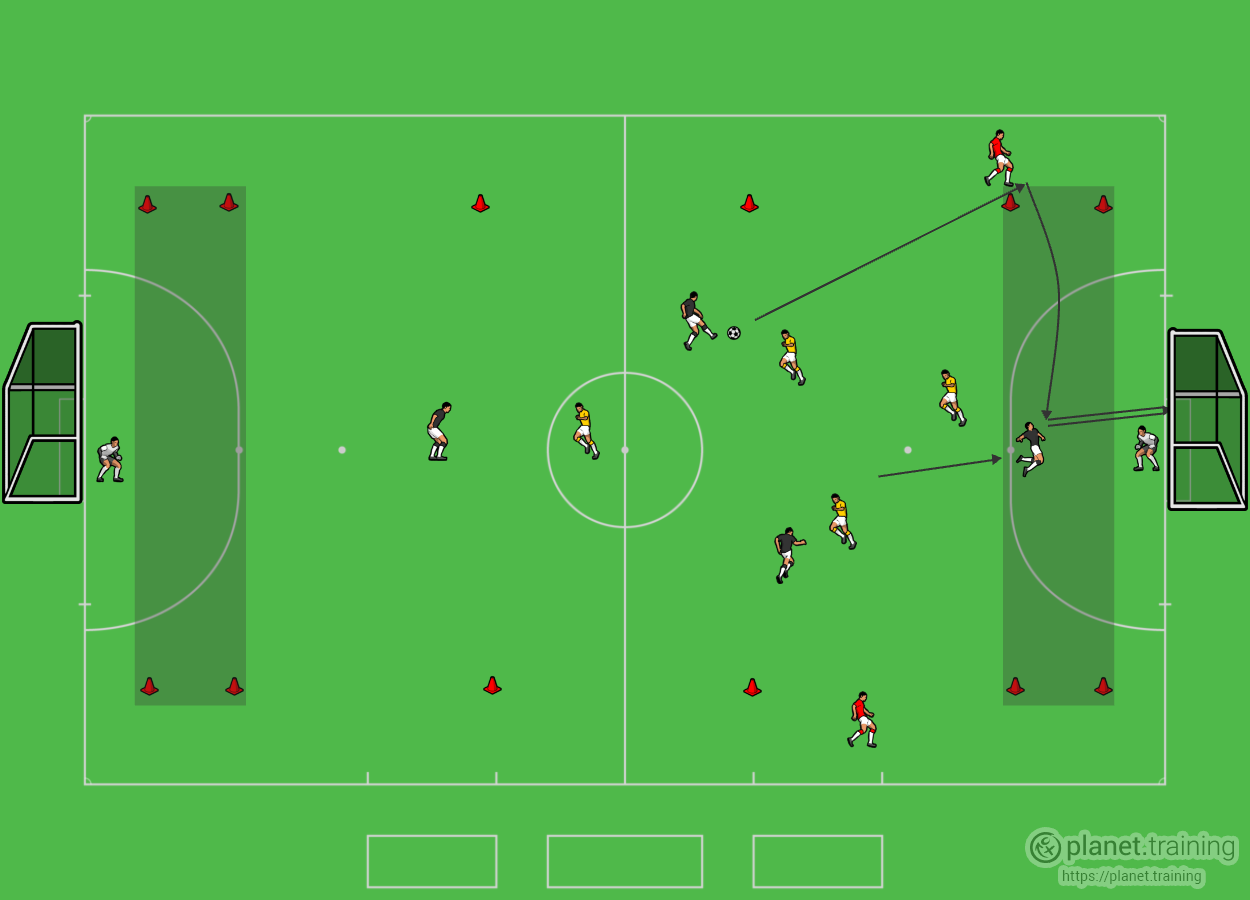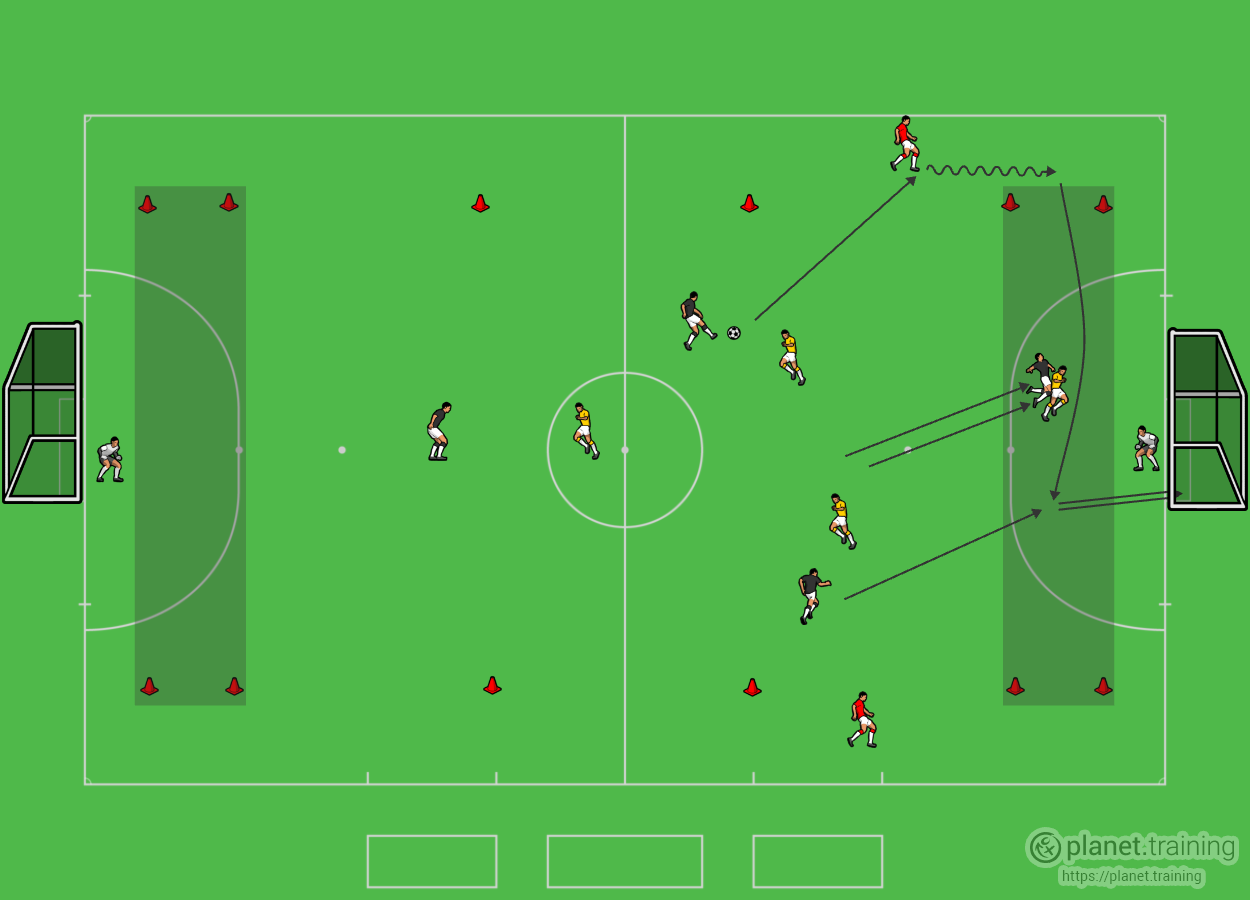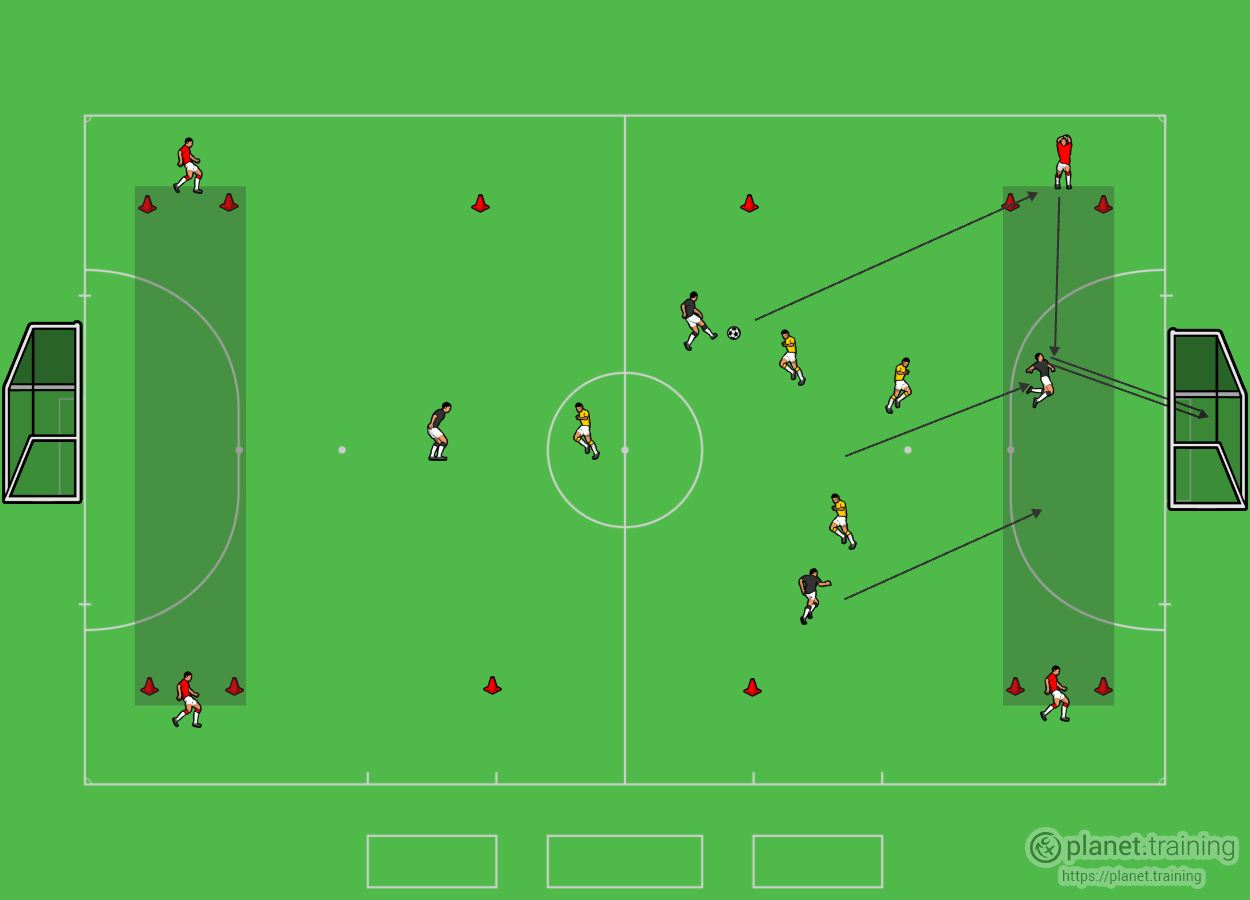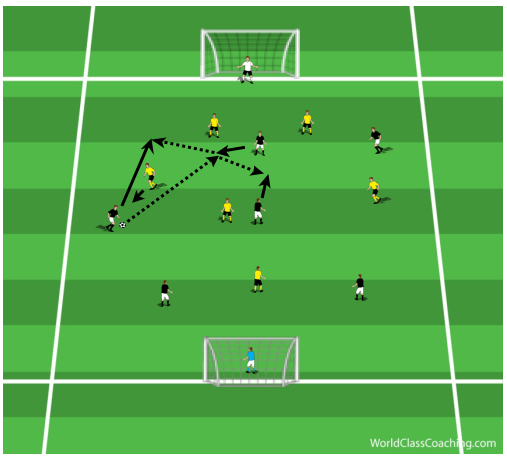By Sean Pearson
Area Size: 40 x 34 yards (Heading Zone: 28 x 5)
Teams: 5 v 5 + 2
Time: 15 Minutes
Objectives
- To understand how to head the ball when aiming to score
- To understand where to head the ball
4 v 4 with GKs. 2 neutrals, 1 in each channel. The aim of this small sided game is to create heading opportunities to score goals. Both ends have a heading zones which only the player heading the ball is allowed into. The GK must stay on their line. This is for safety reason so there are no collisions.

Each team looks to play the ball out wide as often as possible, if the neutral is not near the heading zone they can run with the ball towards it. A single attacking player is allowed in the heading zone. The neutral aims for this player and the attacker uses their forehead, neck and shoulders to aim the ball towards goal.
Work on timing of the run, timing of connection, accuracy and power of the header.

Progression
Allow two attackers to enter the heading zone, 1 at the front post and 1 at the back, eventually allow a defender to mark one of the attackers. The neutral needs to see which attacker is open and aim for the free player.
Variations
If your team are struggling with crosses you can place 4 players on the outsides, in the channels by the heading zone. When the ball is passed, they are allowed to pick the ball up and throw the ball in, to increase the amount of headers. With numbers this could take out your current GK's or you could have 2 neutrals who throw the ball in at both sides keeping the GK's in goal.

Eventually the opposite CM will start to cut off the pass to the striker. This is when you tell your players to go wide. From here can the WM commit their counterpart and play the ball into the striker. The can striker can either perform the give and go or again set one time to the CM.

Coaching Points
- Striker and Cm move oppositely so combinations can be played
- Move the ball until the scenario presents itself, do not force it
Variations
- Change formations
- After the half way line you must play 2 touch
By Sean Pearson. Sean is also the author Coaching Team Shape in the 3-3-1, Coaching Team Shape in the 4-2-3-1 and Coaching Team Shape in the 4-3-3


